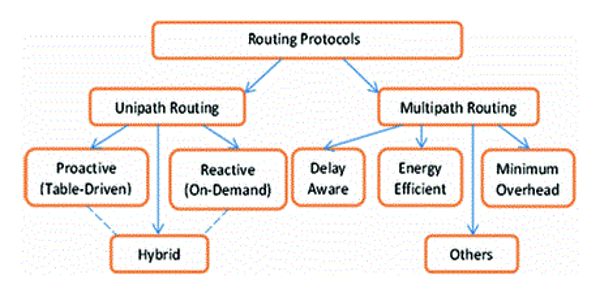Multipath relating to television or radio signals that travel by more than one route from a transmitter and arrive at slightly different times, causing ghost images or audio distortion. Multipath routing is a routing technique simultaneously using multiple alternative paths through a network. It represents a promising routing method for wireless mobile ad hoc networks. This can yield a variety of benefits such as fault tolerance, increased bandwidth, or improved security. It achieves load balancing and is more resilient to route failures.
Mobile networks
To improve performance or fault tolerance, concurrent multipath routing (CMR) is often taken to mean simultaneous management and utilization of multiple available paths for the transmission of streams of data. The streams may be emanating from a single application or multiple applications. Performance evaluations of these protocols showed that they achieve lower routing overhead, lower end-to-end delay, and alleviate congestion in comparison with single-path routing protocols.

Recent advances in wireless communication technologies and the manufacture of inexpensive wireless devices have led to the introduction of low-power wireless sensor networks. Due to their ease of deployment and the multi-functionality of the sensor nodes, wireless sensor networks have been utilized for a variety of applications such as healthcare, target tracking, and environment monitoring. A stream is assigned a separate path, as uniquely possible given the number of paths available. If there are more streams than available paths, some streams will share paths. CMR provides better utilization of bandwidth by creating multiple transmission queues. Traditionally, routing protocols find the best path using a scalar metric. This metric may be a simple constant stating the preference of the link or may be a computed metric using several factors such as bandwidth, latency, or cost.
The main responsibility of the sensor nodes in each application is to sense the target area and transmit their collected information to the sink node for further operations. CMR provides better transmission performance and fault tolerance by providing simultaneous, parallel transport over multiple carriers with the ability to reassign an interrupted stream, and by load balancing over available assets. Due to the explosive growth of wireless communication technology, mobile ad hoc networks (MANETs) have been used in many practical applications in the commercial, military, and private sectors. However, under CMR, some applications may be slower in offering traffic to the transport layer, thus starving paths assigned to them, causing under-utilization. Mobile ad hoc networks (MANETs) consist of a collection of wireless mobile nodes which dynamically exchange data among themselves without the reliance on a fixed base station or a wired backbone network.
Information Source:
















